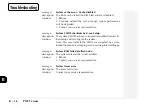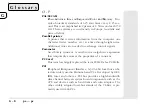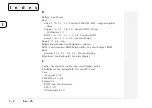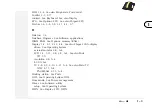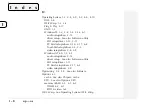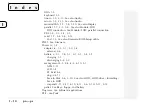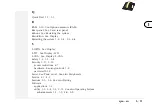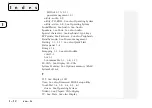
G
2
3
4
5
6
A
8
G 9
PCMCIA
P
ersonal
C
omputer
M
emory
C
ard
I
nternational
A
ssociation. A
consortium of computer manufacturers that devised the stan-
dard for the credit card-size adapter cards used in many note-
book computers. PCMCIA defines three card types: Type I
cards can be up to 3.3 mm thick and are generally used for
RAM and ROM expansion cards; Type II cards can be as thick
as 5.5 mm and typically house modems and fax modems;
Type III cards are the largest (up to 10.5 mm thick) and are
mostly used for miniature hard disks. Windows 95's Plug and
Play architecture provides PCMCIA support, which automati-
cally recognizes when PCMCIA devices are inserted and re-
moved. The simpler term PC Card has largely replaced this
acronym to refer to these cards.
PnP
P
lug a
n
d
P
lay. The technology that makes Windows 95 auto-
matically detect and configure most of the adapters and pe-
ripherals connected to a PC. A fully PnP-enabled PC requires
three PnP components: a PnP BIOS, PnP adapters and periph-
erals, and a PnP operating system. When adding a PnP-com-
pliant device to a PnP PC, the operating system, in conjunc-
tion with PnP logic present in the BIOS and in the device
itself, handles the IRQ settings, I/O addresses, and other tech-
nical aspects of the installation to ensure that the device doesn't
conflict with other installed devices.
pc pn






